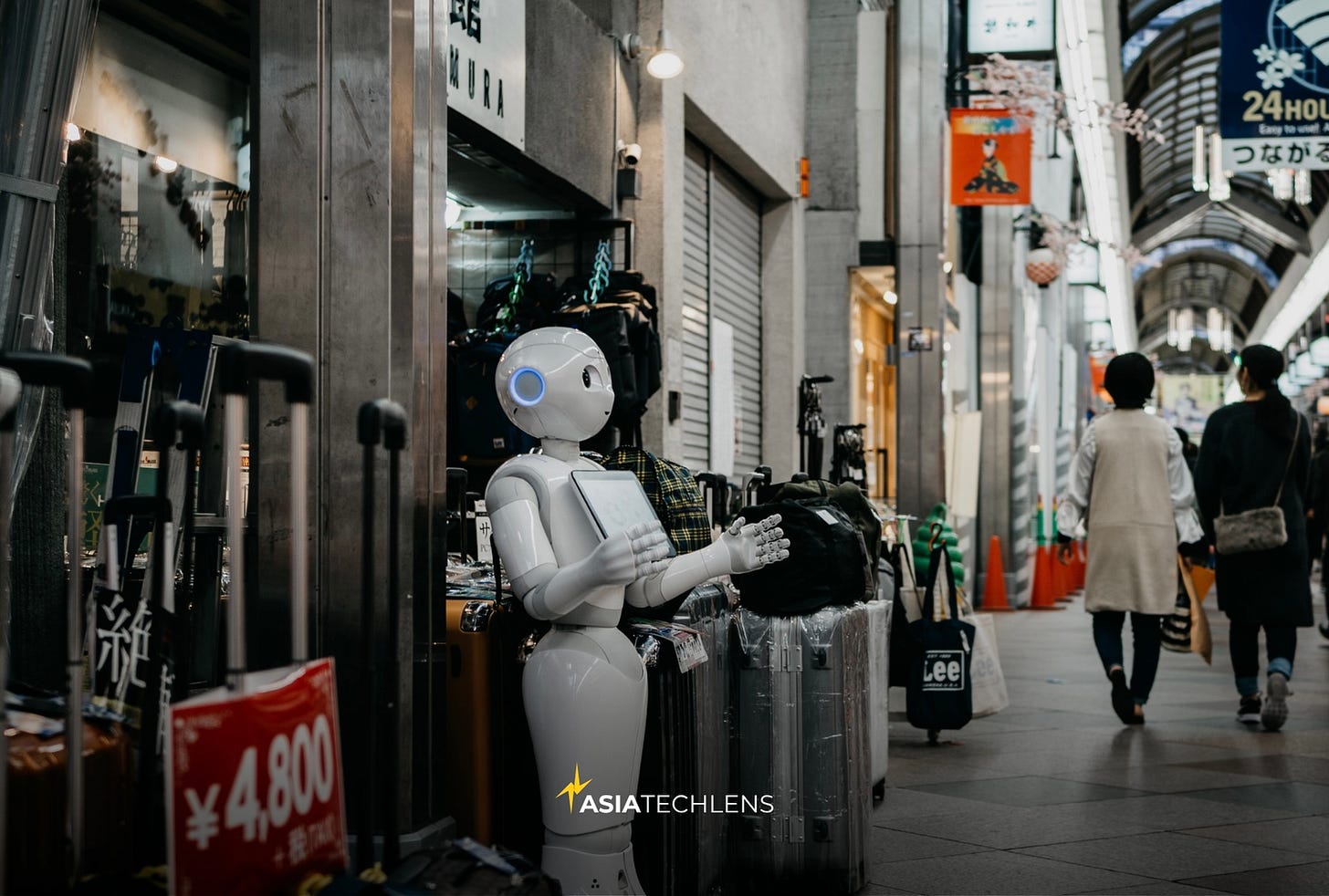Singapore’s Robots Don’t Go Viral — They Go Global
In a world chasing viral prototypes, Singapore’s quiet stack is reliable, data-rich, and built to travel. It turns proofs of concept into profitable exports.
In China and Japan, humanoids fold shirts and perform folk dances on national TV. Singapore, meanwhile, is building robots that clean hulls and move carts — and export them.
Singapore’s startups aren’t chasing viral moments; they’re building businesses. Several robotics companies based in the city-state have made headlines this year for raising significant rounds or expanding overseas.
These are the practical systems that clean hulls, scrub floors, shuttle hospital carts, and map messy warehouses. They may not dominate social media, but they can secure service contracts, collect valuable operational data, and expand into ports, airports, and factories faster than the flashy prototypes.
Robotic snapshots in the last 12 months
Industrial precision
Augmentus — no-code programming for high-mix manufacturing. It received a strategic investment from Applied Ventures to scale globally.
Eureka Robotics — AI vision and precision manipulation. It announced a new growth phase and reiterated its US$10.5 million Series A to scale products like the Eureka Controller and its 3D camera.
Autonomy and mobility
LionsBot International — autonomous cleaning robots. It raised US$20.6 million in April to accelerate global expansion.
Botsync — AMRs for factories and warehouses. It won the SBR Technology Excellence Award (Manufacturing) and plans to double sites and surpass one million production trips in 2025.
Marine and underwater
Neptune Robotics — hull-cleaning robots. It raised US$52 million in Series B funding in October to enter 20 markets and build new robots and AI services.
BeeX — autonomous underwater robots for inspection and survey. It closed a US$7.4 million Series A and highlighted demand for its new HAUV model, BETTA.
Agritech
Polybee — autonomous pollination drones. It has been active in the UK–Singapore precision-pollination program this year.
Software is the edge
What makes these startups interesting is the orchestration behind the hardware. Take no-code platforms for manufacturing like those from Augmentus: they let factories tweak robot tasks on the fly without calling in a PhD-level programmer. Think of reprogramming a welding robot for a new car part — in minutes instead of days. The payoff is straightforward: setup times fall from weeks to days.
“Our vision is to enable factories to adapt as quickly as the world changes,” says Daryl Lim, co-founder and CEO of Augmentus, in a recent note on its investment from Applied Ventures. In short, it turns a daunting programming task into something closer to a tablet workflow — putting more control in the hands of operators.
Fleet orchestration has become the invisible backbone of warehouse automation — and Botsync wants to own that layer. Its software coordinates multiple robots in a warehouse, avoids collisions, and reduces those human-rescue moments when a bot gets stuck or knocked off course.
The stacks are built to work across brands, so customers aren’t locked in. They can run mixed fleets and swap hardware by market. LionsBot, for instance, gives hospitals and malls an app-driven way to schedule cleaning runs alongside other vendors’ haulers.
“Boring” pays
The robots getting funded here do repeatable jobs with measurable returns. Buyers can see square meters cleaned per hour, fuel saved per ship, and fewer line stoppages. That’s why the budget shows up.
In robotics, reliability is the new charisma — and it pays back fast.
The Asia-Pacific service-robotics market was worth about US$15.5 billion in early 2025 and is forecast to expand to US$34.1 billion by 2030, according to a Mordor Intelligence report. On Asia’s autonomous mobile robots (AMRs), the report pegs average payback at under 2.5 years, opening the door for mid-sized distributors to jump in without second-guessing.
For products like cleaning robots, Nilfisk’s industry analysis spells it out even tighter: “For facilities cleaned every day — like shopping centers, airports, and large retailers — the payback period typically ranges from 14 to 24 months.”
It’s simple math: buyers get their money back in less than two years, add monthly fees for updates and data, and sign multi-year deals to keep cash flowing.
From payback periods to port expansions, Singapore’s robotics ecosystem is exporting its formula for reliability.

The export playbook
Singapore’s robotics model scales predictably: prove reliability at home, partner abroad, then replicate through certified distributors.
Augmentus is opening operations in Austin, Texas. Neptune’s underwater robots aim to replace divers by cleaning hulls three to five times faster, with coverage across 61 Asian ports and fresh funding to enter more markets. LionsBot’s cleaning robots now operate in 30-plus countries across Europe, the U.S., the Middle East, and Asia.
The strategy is consistent: build reliable systems in a high-cost, regulated home market, then partner with distributors and system integrators to enter Malaysia, Indonesia, the Gulf states, Japan, and beyond. Certifications such as ISO standards and maritime approvals often transfer with minimal rework, while English-language support helps in places like the UAE and U.S. boardrooms.
It isn’t easy, though. A Center for Security and Emerging Technology report warns that Singapore is “falling far short” on ICT talent, producing only about 2,800 new graduates a year against demand of roughly 60,000 by 2024 — a shortfall that underscores the need for automation itself.
Funding is uneven, too. Early-stage robotics investment dipped in 2023, according to F-Prime Capital, as R&D costs stayed high and the global tech cycle cooled. Humanoids make headlines, but logistics robots make payroll. Scaling hardware that works in everyday, unpredictable settings takes more operational grit than glamour.
Nevertheless, public support helps. Singapore’s National Robotics Programme (NRP) received a S$60 million top-up in 2024, alongside the launch of RoboNexus, an accelerator that offers mentorship, workshops, customer introductions, and research trips to the U.S. Cohorts have included LionsBot, KABAM Robotics, and dConstruct.
NRP also recently launched a shared testbed and new standards for robot interoperability. A parallel program now focuses on strengthening talent pipelines.
“Through open collaboration and shared infrastructure, Singapore is helping industry partners deploy robotics faster, safer, and more widely,” says NRP executive director Tung Meng Fai. “These latest initiatives reinforce Singapore’s role as both a contributor to the global open-source community and a hub for robotics adoption.”
Other initiatives sit under the Research, Innovation and Enterprise 2025 plan, a five-year umbrella with about S$25 billion for AI, robotics, and deep tech. Enterprise Singapore also offers matching funds through programs such as Startup SG Equity for prototypes and overseas expansion.

The bottom line
2025 tilts toward practical automation. Labor costs are rising across Asia, safety and productivity targets are tightening in logistics and manufacturing, and shipping faces pressure to decarbonize.
Robots that deliver measurable outcomes — uptime, throughput, square meters cleaned per hour, or fuel saved — win budgets because payback is under two years and performance is auditable.
This year’s winning robots aren’t humanoid celebrities — they’re reliable colleagues. Singapore’s machines may be quiet, but their reach is anything but.


